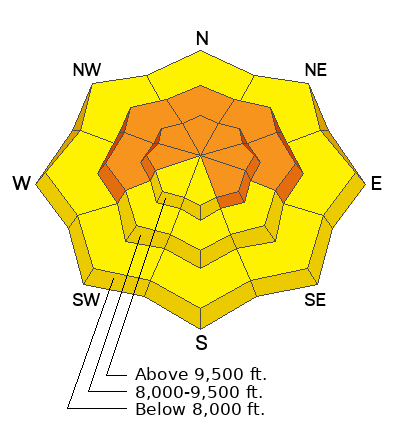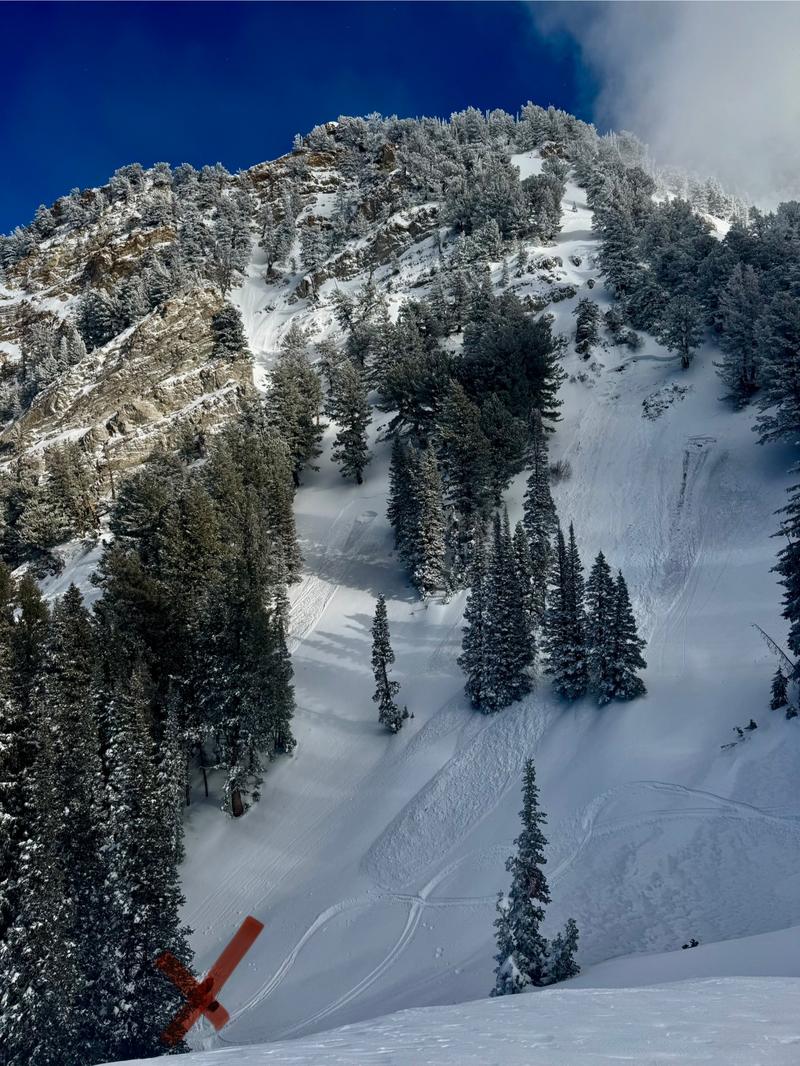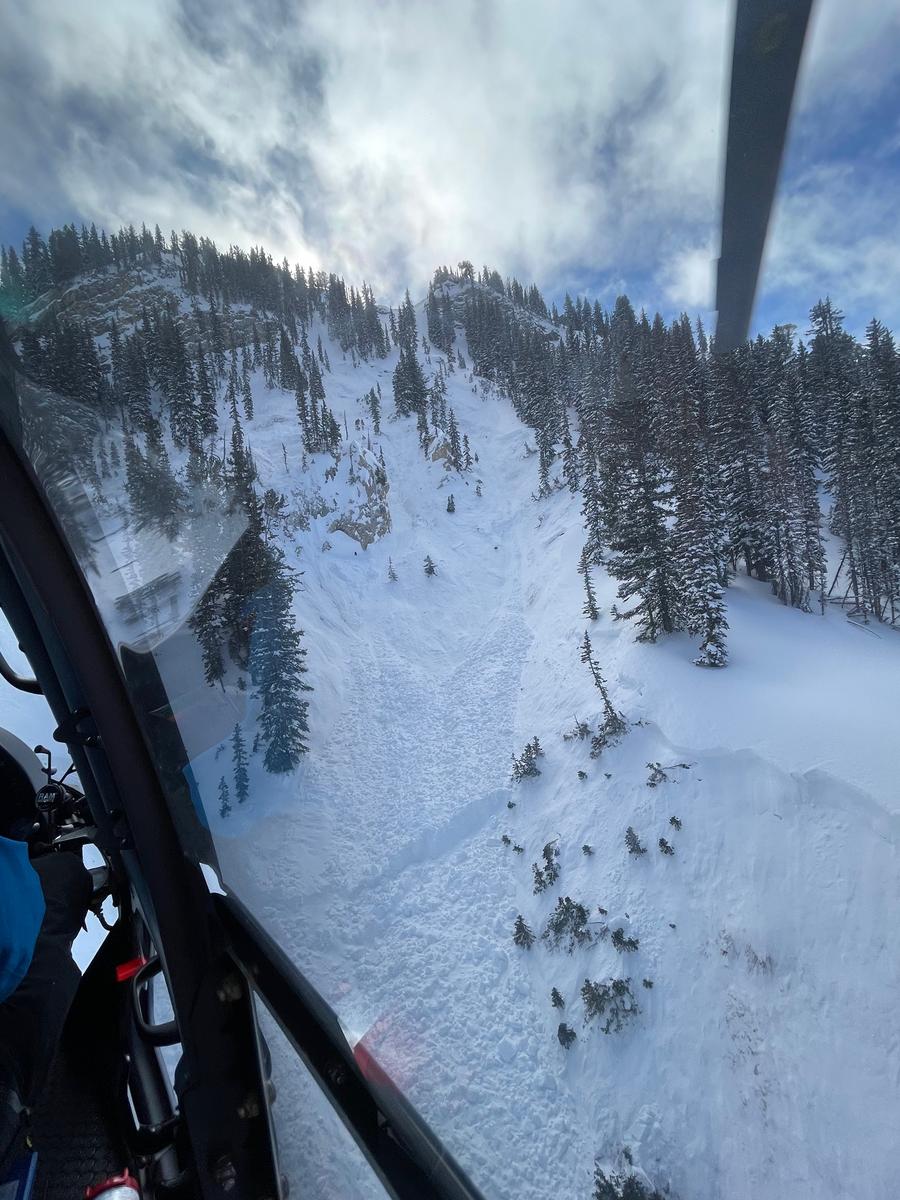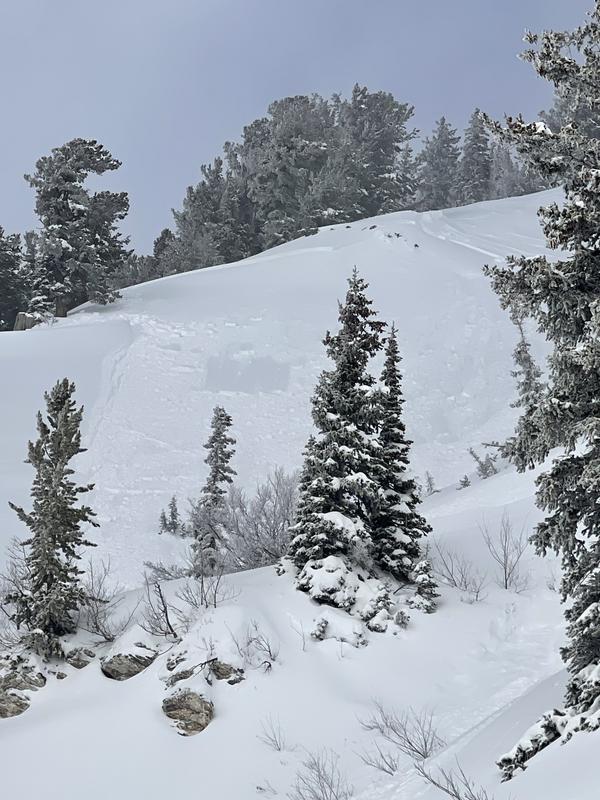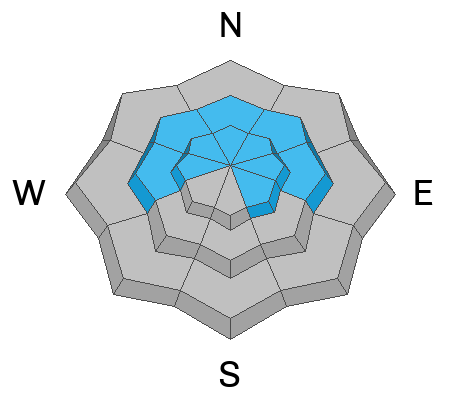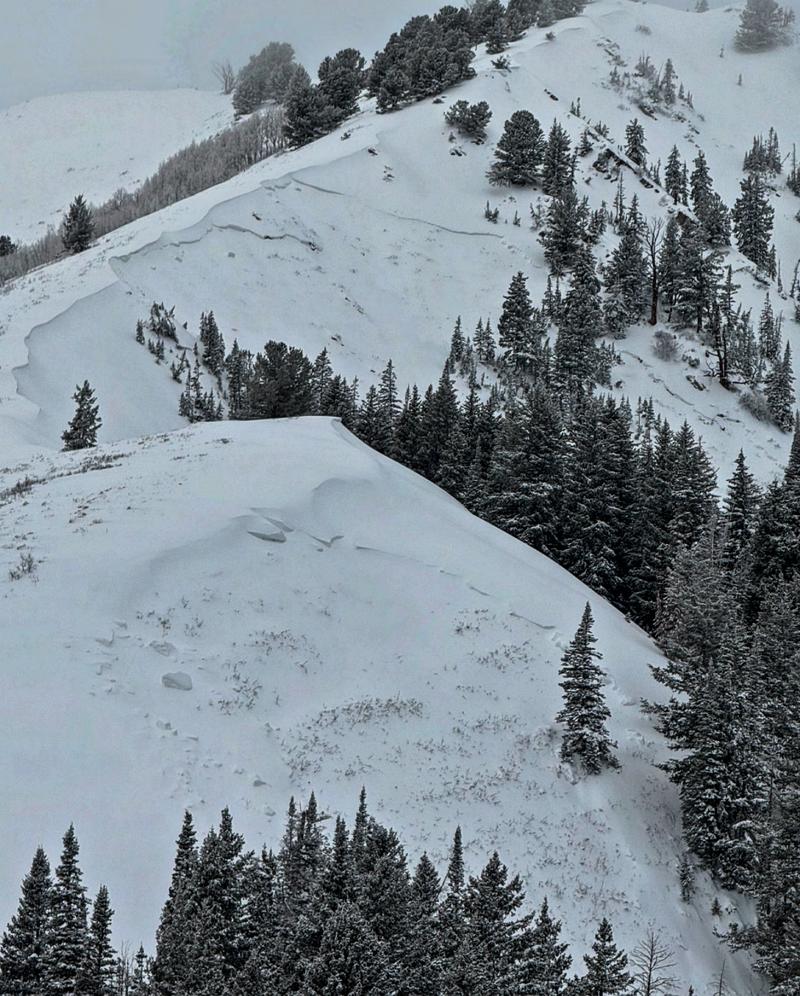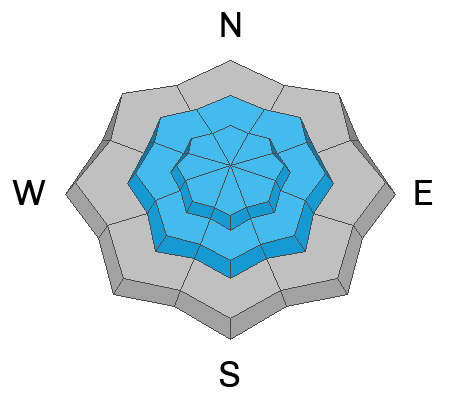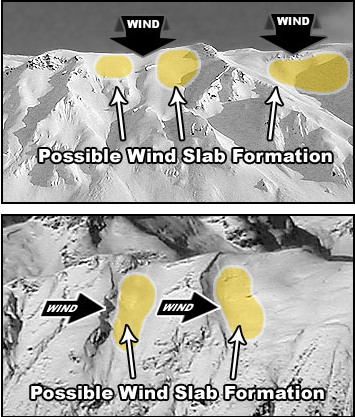We are deeply saddened to confirm two avalanche fatalities. The first involved a 38 year old man in Main Porter Fork of Mill Creek Canyon who went missing on Saturday. The second avalanche fatality occurred Tuesday that involved a 54 year old man off Davenport Hill into Silver Fork of BCC. Both individuals were traveling alone in the backcountry. Our condolences go out to to the family and friends of the victims.
Many thanks to those who responded to these accidents: search and rescue teams from AirMed, LifeFlight, Utah Dept Public Safety, Utah Department of Transportation, Salt Lake County Search and Rescue, Wasatch Backcountry Rescue, Alta Ski Area, and members of the Utah Avalanche Center.
6 am: Temperatures have been on the rise overnight and are in the upper 20's F. Winds are from the south/southwest and have also increased overnight, averaging in the teens with gusts in the mid 20's mph along exposed ridgelines above 9,500' with 11,000' wind speeds averaging in the 30's with gusts in the 50's mph.
24-hour snowfall totals in the Cottonwoods and Park City ridgeline are 7-9 inches containing 0.7 - 1.5 inches of water.
Today: Mostly sunny this morning, with clouds filling in during the afternoon. Temperatures will rise into the upper 30's F. Winds will be from the southwest and will average in the teens with gusts in the 20's mph up to 10,500' with 11,000' winds averaging in the upper 20's mph with gusts around 50 mph.
This Weekend: Increasing winds this evening with snowfall beginning overnight. A cold front arrives around dawn on Saturday, with heavy snowfall on a cold northwest flow. Snowfall totals are likely to exceed a foot.
Our
Week in Review where we highlight significant avalanche and weather events
has been published.
Three avalanches were reported from the backcountry on Thursday:
The first two were on northeast aspects at 9,800' and avalanched naturally, likely due to wind-loading. Both failed on facets:
1.
Wilson Chutes along the Big Cottonwood/Millcreek ridgeline. It was up to 3 feet deep and 200 feet wide.
2.
Upper Dutch Draw along the Park City ridgeline. It was up to 2 feet deep and 50 feet wide.
The third avalanche caught my attention as it occurred on a southerly aspect:
3.
Emma Ridges in upper Little Cottonwood where the rider was briefly caught and carried. The avalanche was up to 8 inches deep and 30 feet wide at 9,500'. It failed on a sun crust that formed on Tuesday. (Photo below)
Reminder: Please call Alta Central (801-742-2033) or your closest ski patrol dispatch (INFO) if you happen to witness a new avalanche near a ski area and are sure there is no one involved. This allows rescue teams to stand down and not stick their necks out if they're not needed. Thank you -
For detailed observations and reports, check out all avalanche observations
HERE. 
